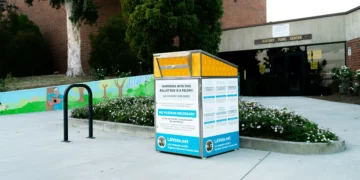Once confined to the once-a-decade ritual of Census-based mapmaking, redistricting has become a year-round political weapon. In 2025, Wisconsin sits squarely at the heart of the nation’s escalating “map wars,” as both parties move to redraw congressional districts mid-cycle in an effort to tilt the balance of power before the 2026 midterms.
The Wisconsin Supreme Court has agreed to hear two challenges targeting the state’s congressional maps, cases that could upend the political landscape for U.S. Reps. Bryan Steil and Derrick Van Orden, both Republicans who hold competitive seats.
The justices ordered legal briefs from plaintiffs arguing that the state’s current districts are unconstitutional and must be replaced with “neutral” maps before the next election. The lawsuits are backed by well financed liberal law firms aligned with national Democratic redistricting networks.
Democrats’ push to overturn Wisconsin’s congressional map underscores a sharp reversal from their past rhetoric. For years, Wisconsin Democrats condemned mid-decade redistricting as “political gerrymandering,” arguing it undermined voters’ confidence in elections. Now, with a liberal majority on the state Supreme Court, those same voices are urging justices to scrap lines they say unfairly favor Republicans.
The political motive is clear: Democrats hope a new map could dismantle GOP-held districts like those of Bryan Steil and Derrick Van Orden, potentially flipping one or both to reclaim a House majority. The effort is less about reform and more about results—mirroring the national pattern where both parties have abandoned redistricting restraint in favor of raw political advantage. (RELATED: Wisconsin Democrats Kick Off 2026 Gubernatorial Efforts with ‘Readiness Project’)
The push echoes a broader national trend: governors and state courts stepping into a power vacuum left by the U.S. Supreme Court’s 2019 decision in Rucho v. Common Cause, which declared partisan gerrymandering a nonjusticiable federal issue. That ruling effectively handed redistricting authority to the states, unleashing a series of aggressive mid-decade redraws now threatening to rewrite the 2026 electoral map.
Nowhere is the shift more visible than in Texas and New York. Texas Gov. Greg Abbott recently convened a special session to pass a new congressional map projected to yield up to five additional Republican seats. In response, New York Gov. Kathy Hochul has hinted at a “tit-for-tat” strategy, suggesting Democrats could revisit their own map despite constitutional limits that restrict redistricting to once per decade.
The escalation has Democrats eyeing Wisconsin as one of the few remaining battlegrounds where judicial action could offset GOP gains elsewhere. A new map favoring Democrats could flip one or both state’s swing districts—potentially costing Republicans their razor-thin House majority. For Steil, who represents the southeastern 1st District, and Van Orden, whose western 3rd District leans only narrowly Republican, any court-ordered redraw could make reelection far more difficult.
Observers warn the stakes extend far beyond Wisconsin. With both parties’ abandoning restraint, state courts have become the only referees in what experts call “uncharted territory.” Nonpartisan watchdogs caution that constant map manipulation is corroding public trust and erasing long-standing norms.
In Wisconsin, where the court flipped to a liberal majority in 2023, the pending cases could mark a turning point. If the justices strike down current congressional lines, the ruling would effectively greenlight mid-decade remapping nationwide—cementing the new era of permanent redistricting warfare. (RELATED: Class Action Lawsuit Filed in Aftermath of Madison Discarding Nearly 200 Ballots)






























